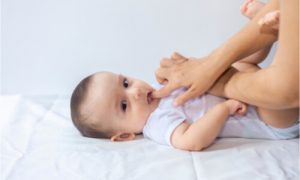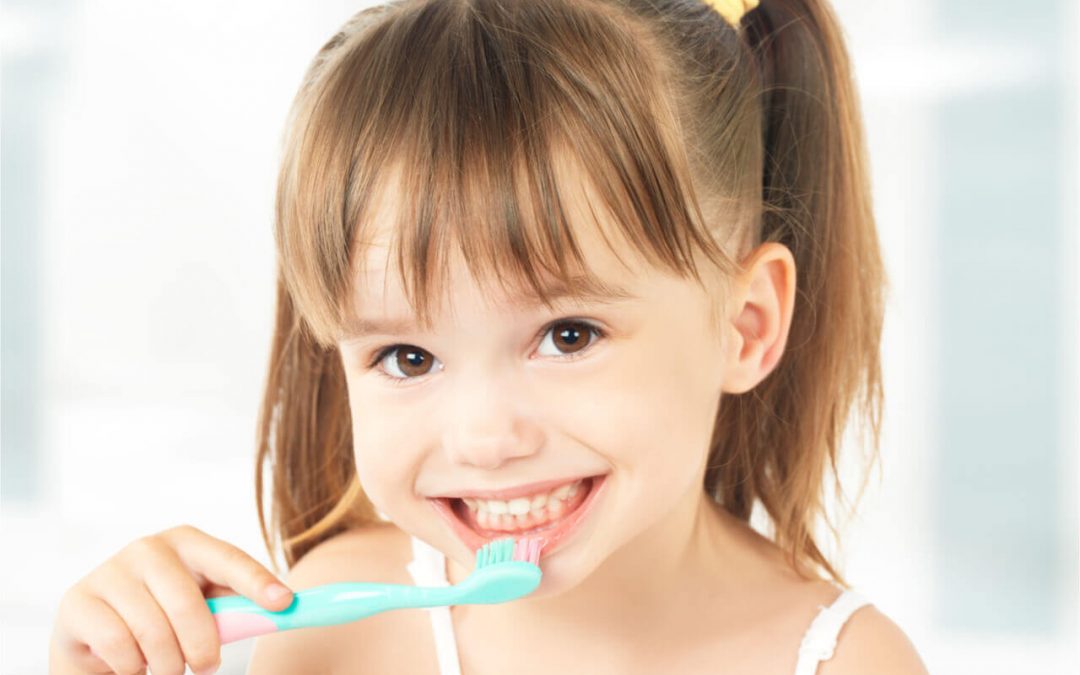When do baby teeth start to come in? It is a question that many parents ask themselves as their baby approaches the age of teething. The baby teeth eruption chart below shows how baby teeth typically break through the gums at different ages. This post will give you an overview of what can be expected when your baby starts teething and how to help alleviate some of those symptoms!
What is Tooth Eruption?
Tooth eruption is when teeth come through the gums into the mouth. The baby teeth, also called primary teeth or deciduous teeth, are the first teeth to erupt. They will eventually be replaced by permanent  adult teeth.
adult teeth.
What are The Different Stages of Baby Tooth Development?
The primary tooth eruption chart below shows the different stages of baby tooth eruption:
1st Stage: Incisors – The incisors are the baby teeth that erupt at around 6-8 months old. They are the front child’s baby teeth located in the middle of the mouth. Usually, after approximately six more months, baby’s other central incisors will appear, followed by the baby’s lateral incisors.
2nd Stage: Canines – The baby teeth that erupt are the canine teeth located next to the upper incisors. They are also known as eye baby teeth because they are slightly visible when they smile.
3rd Stage: First Molars – These baby molars erupt at around 14-18 months of age. These baby teeth are located at the back of the baby’s mouth.
Second Molars – The second molars are the last baby teeth to erupt, and they usually come in when the baby is around 2-3 years old. They are located at the back of the baby’s mouth, next to the first molars.
Third molars – Third molars, or wisdom teeth, are the last teeth to erupt, and they typically come in when your child is around 18-21 years old.
In total, 20 baby teeth pass through the gums. There are 10 on the upper jaw and 10 on the lower jaw. Your infant’s mouth will gradually fill up with these teeth until three years old. Around the age of six, baby teeth fall out starts to happen.
Signs of Dental Health Concern: What are the Symptoms of Teething in Baby?
The baby teething chart can be a valuable tool for parents to monitor their child’s teething progress. However, it is essential to be aware of the potential side effects of teething in babies. Some common symptoms of teething include:
- Drooling
- Fussiness or irritability
- Red, swollen gums
- Biting or chewing on things
- Loss of appetite
- Sleep problems
In addition, some babies may experience more severe side effects such as:
- Fever
- Diarrhea
- Vomiting
- Coughing or wheezing
If your baby experiences any of these symptoms, be sure to consult with your pediatrician.
Teething baby symptoms are hard to identify and too hard to describe. Teething baby symptoms are typically noticed but often ignored because teething symptoms are common in babies, especially during the initial eruption of baby teeth.
However, suppose baby teething symptoms become too severe or last too long. In that case, it may be time to consider baby teething remedies or baby teething pain management.
How To Manage Baby Teething Symptoms
Managing baby’s teething process can be a daunting task for parents, especially during the early stages. However, it can be much easier with a little preparation and knowledge. Here are some tips for managing a baby’s teething:
- Make sure your baby is getting enough fluids. Dehydration can occur during the teething process, so make sure your baby drinks plenty of water, juice, or milk.
- Gently massage your baby’s gums with a clean finger. This can help relieve gum discomfort and help baby teeth break through the gums.
- Provide the baby with a cool, damp cloth to chew on. This can help soothe the baby’s gums and lessen discomfort.
- Keep baby distracted by playing, singing, or reading to baby. When the baby is not teething, make sure they get plenty of exercises to help tire them out and keep the baby entertained.
- Do not force the baby to eat solids if a baby isn’t ready for baby teeth eruption. Baby’s baby teeth are essential to know when the baby is ready for baby teeth eruption.
- Try baby teething rings, which can provide comfort and relief.
- If your baby begins drooling excessively, prepare a clean cloth or burp cloth that you can keep available in case of a spit-up.
By following these tips, you can help make the teething process easier for you and your baby.
What to Do When Baby’s Permanent Tooth Erupts
Permanent teeth erupt through the gums—the average age is around 6 years, but it is different for each child. You can do the following to make sure you keep your baby’s permanent teeth strong and healthy:
1. Clean baby teeth thoroughly every time baby eats or drinks to avoid plaque buildup and tooth decay. Brush baby teeth with a small, soft-bristled baby brush and a smear of fluoride toothpaste. And use a pea-sized amount on your baby’s brush.
2. Hold baby’s head up with one hand and carefully brush baby’s teeth with the other hand in a circular motion.
3. Give baby 4-6 weeks to get used to you brushing her teeth and avoid forcing the baby to open her mouth if she does not want to.
4. Once the baby is old enough, teach how to brush her own teeth. If she does not like getting her mouth wet, let the baby spit into a cup of water or rinse the baby’s mouth out with water after you brush her teeth for her.
5. Start flossing baby’s teeth when baby is between 3 and 6 years old. Floss baby’s teeth in the same way you floss your own—wrap the floss around your fingers, so there’s a little bit of slack, and use a gentle sawing motion.
6. Take baby to the dentist for her first check-up within 6 months after baby’s first tooth erupts, or when baby is 1 year old, whichever comes first.
7. If the baby falls and bumps her teeth, go to the ER for any swelling, bleeding, or pain.
Generally, permanent teeth should be brushed twice a day with fluoride toothpaste. Flossing once a day is also essential to remove plaque and bacteria between the teeth and gum lines. Additionally, see your dentist for a cleaning every 6 months. If you have braces, you will need to visit your orthodontist more often.
Final Thoughts
Your child must have their first dental visit when a tooth starts to erupt or around six months old. This is because the baby teeth are typically beginning to come in at this age, and you want to make sure they’re healthy before they fall out. You should also be looking for signs that may indicate an oral or other health problem, like excessive drooling or difficulty feeding.
In addition, some things may affect how your child’s teeth come in. Hence, make sure you talk to a dentist who has experience working with infants and young children! If you need help finding one, give us a call at (08) 9783 9006 today!
References:
https://www.mouthhealthy.org/en/az-topics/w/wisdom-teeth
https://www.medicalnewstoday.com/articles/fluoride-toothpaste
https://www.nhs.uk/conditions/baby/babys-development/teething/baby-teething-symptoms/


Recent Comments